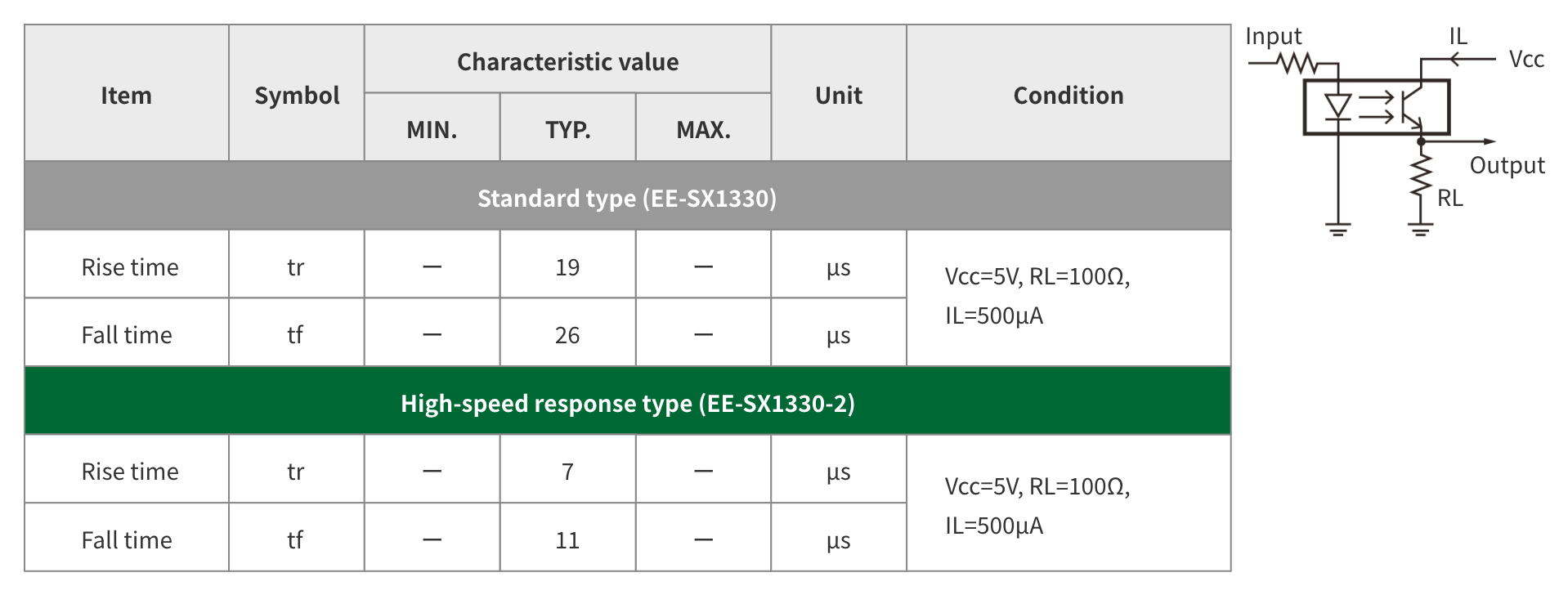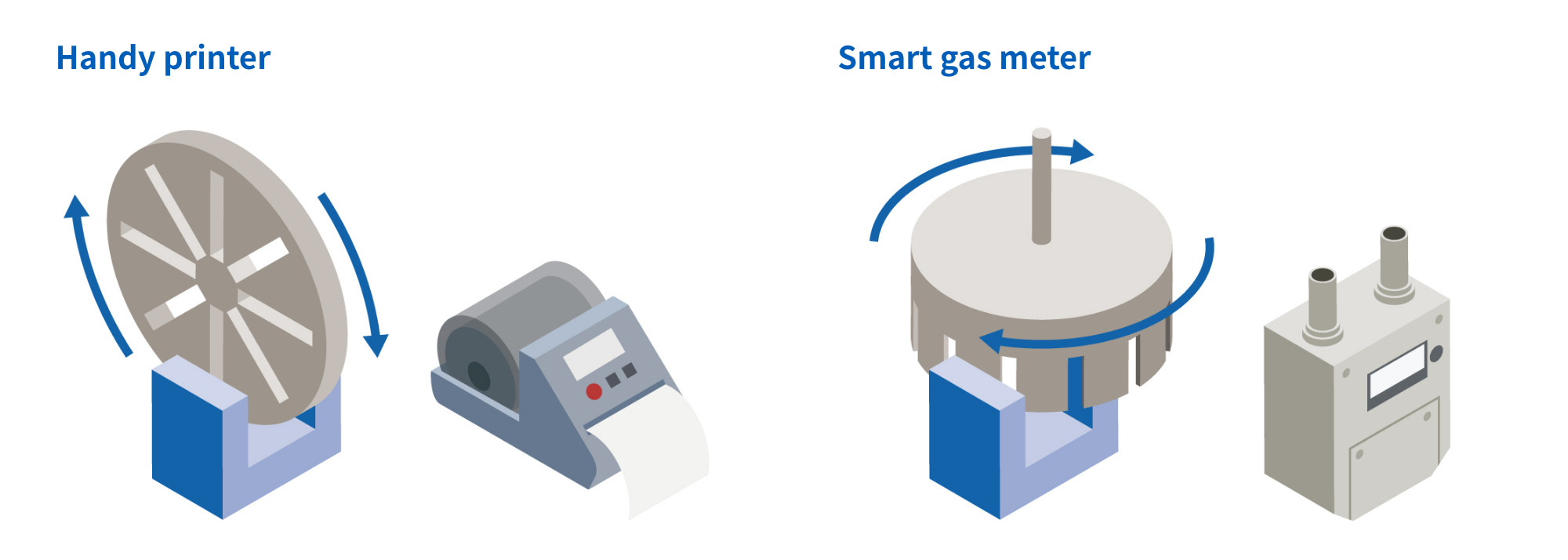Low power consumption drive
B: Contribution to decarbonization of customers' products
Transmissive optical sensor
(High-speed response type)
EE-SX1330-2
Contributing to a long battery
runtime by minimizing
the pulse width in LED pulse
driving (low current
consumption circuit)

For battery-powered equipment such as mobile devices and gas meters, the design challenge is to prolong the battery runtime by reducing the current consumption.When using optical sensors for such an application, lower current consumption is achieved generally by pulsing LEDs and reducing their duty ratio*1 (i.e., reducing the pulse width).OMRON has added a "high-speed response type" to its lineup of the phototransistor output type that can minimize pulse widths, contributing to further reductions in current consumption.
*1. Duty ratio: Pulse width divided by switching cycle,
in percent.


[The value DMS provides]
- Contributes to a long battery runtime due to the lower current consumption of the optical sensor.
- Reduces waste loss with a compact SMD type that enables equipment to be smaller and lighter.
What is High-speed Response Type?
This type has a short response time (rise/fall time) from when the LED emits light to when the phototransistor output changes.If the pulse width is reduced, the output of the phototransistor may not rise sufficiently, and result in insufficient output.However, the high-speed response type has a shorter rise time than the standard type. Making it easier to capture the output voltage with a smaller duty ratio (smaller pulse width).

 |
Application examples:
"This product can be used to prolong the lifetime of battery-powered equipment.
(Handy printers, smart gas meters, service robots, IP cameras, etc.)"

Transmissive optical sensor (SMD type)
lineup
 |
*2. PTr: Phototransistor, P-IC: Photo IC
*3. EE-SX3~: Dark-on type, EE-SX4~: Light-on type



